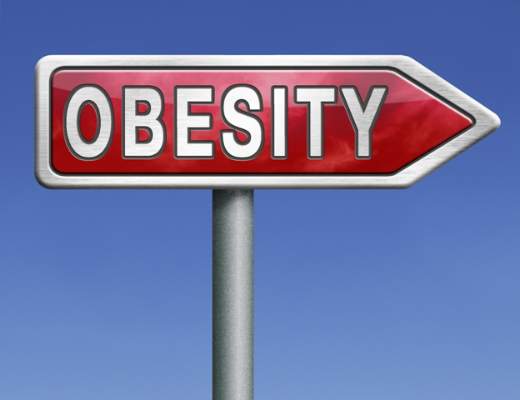User login
The phenomenon of “healthy obesity”– having a body mass index over 30 kg/m2 but without significant metabolic risk factors – is most often a transitive phase toward unhealthiness, and not a stable physiological stage, a new report suggests.
“Healthy obese” adults were nearly eight times more likely to progress to an unhealthy obese state after 20 years than were healthy nonobese adults. After 20 years, roughly 50% of healthy obese adults were unhealthy obese, and 10% were healthy nonobese, lead author Joshua A. Bell wrote in a research letter published Jan. 5 in the Journal of the American College of Cardiology (doi: /10.1016/j.jacc.2014.09.077).
Mr. Bell and his colleagues from the department of epidemiology and public health at University College London examined data from 2,521 British government workers between the ages of 39 and 62 years. Each participant’s body mass index, cholesterol, blood pressure, fasting plasma glucose and insulin resistance was measured over 5 years, 10 years, and 20 years. Three-quarters of the participants were male.
The sample included 66 “healthy obese” adults at baseline, or about a third of all obese participants. Of these subjects, 21 (32%) were unhealthy obese after 5 years, and 27 (41%), 23 (35%), and 34 (52%) were unhealthy obese after 10, 15, and 20 years, respectively.
“Our results, which were obtained with a longer, more detailed follow-up than any previous study, suggest that long-term stability is the exception, not the norm. The natural course of healthy obesity is progression to metabolic deterioration,” the authors wrote.
There were no relevant disclosures to report.
The phenomenon of “healthy obesity”– having a body mass index over 30 kg/m2 but without significant metabolic risk factors – is most often a transitive phase toward unhealthiness, and not a stable physiological stage, a new report suggests.
“Healthy obese” adults were nearly eight times more likely to progress to an unhealthy obese state after 20 years than were healthy nonobese adults. After 20 years, roughly 50% of healthy obese adults were unhealthy obese, and 10% were healthy nonobese, lead author Joshua A. Bell wrote in a research letter published Jan. 5 in the Journal of the American College of Cardiology (doi: /10.1016/j.jacc.2014.09.077).
Mr. Bell and his colleagues from the department of epidemiology and public health at University College London examined data from 2,521 British government workers between the ages of 39 and 62 years. Each participant’s body mass index, cholesterol, blood pressure, fasting plasma glucose and insulin resistance was measured over 5 years, 10 years, and 20 years. Three-quarters of the participants were male.
The sample included 66 “healthy obese” adults at baseline, or about a third of all obese participants. Of these subjects, 21 (32%) were unhealthy obese after 5 years, and 27 (41%), 23 (35%), and 34 (52%) were unhealthy obese after 10, 15, and 20 years, respectively.
“Our results, which were obtained with a longer, more detailed follow-up than any previous study, suggest that long-term stability is the exception, not the norm. The natural course of healthy obesity is progression to metabolic deterioration,” the authors wrote.
There were no relevant disclosures to report.
The phenomenon of “healthy obesity”– having a body mass index over 30 kg/m2 but without significant metabolic risk factors – is most often a transitive phase toward unhealthiness, and not a stable physiological stage, a new report suggests.
“Healthy obese” adults were nearly eight times more likely to progress to an unhealthy obese state after 20 years than were healthy nonobese adults. After 20 years, roughly 50% of healthy obese adults were unhealthy obese, and 10% were healthy nonobese, lead author Joshua A. Bell wrote in a research letter published Jan. 5 in the Journal of the American College of Cardiology (doi: /10.1016/j.jacc.2014.09.077).
Mr. Bell and his colleagues from the department of epidemiology and public health at University College London examined data from 2,521 British government workers between the ages of 39 and 62 years. Each participant’s body mass index, cholesterol, blood pressure, fasting plasma glucose and insulin resistance was measured over 5 years, 10 years, and 20 years. Three-quarters of the participants were male.
The sample included 66 “healthy obese” adults at baseline, or about a third of all obese participants. Of these subjects, 21 (32%) were unhealthy obese after 5 years, and 27 (41%), 23 (35%), and 34 (52%) were unhealthy obese after 10, 15, and 20 years, respectively.
“Our results, which were obtained with a longer, more detailed follow-up than any previous study, suggest that long-term stability is the exception, not the norm. The natural course of healthy obesity is progression to metabolic deterioration,” the authors wrote.
There were no relevant disclosures to report.
FROM THE JOURNAL OF THE AMERICAN COLLEGE OF CARDIOLOGY
